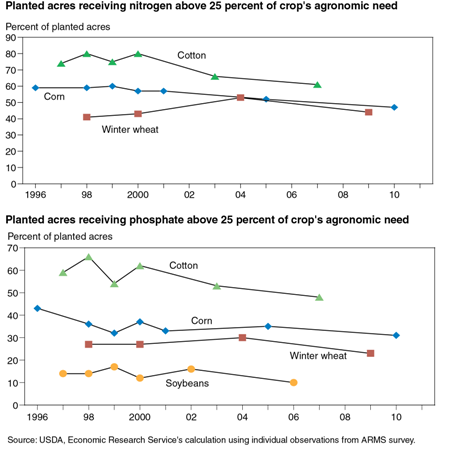The share of planted acres with excess nutrient use is declining for most crops
- by Economic Research Service
- 10/12/2012

Nitrogen, phosphate, and potash are essential in the production of crops used for food, feed, fiber, and biofuel. Applied annually, most of these nutrients are absorbed by the crops, but when applied in excess, they can be lost to the environment through volatilization into the air, leaching into ground water, emission from soil to air, or runoff into surface water. These losses can be reduced by the adoption of best management practices that match nutrient supply for crop needs, minimize nutrient losses, and enhance plants' capability to uptake nutrients. For corn, the share of planted acres with excess nitrogen applied (above 25 percent of the crop's needs) declined from 59 percent in 1996 to 47 percent in 2010, while the share of acres with excess phosphate declined from 43 percent in 1996 to 31 percent in 2010. Other crops also exhibit either declining or unchanged shares of planted acres with excess use of nitrogen or phosphate. This chart can be found in the ERS report, Agricultural Resources and Environmental Indicators, 2012 Edition, EIB-98, August 2012.

